Singapore Math: An Overview For Homeschool Families
As a former math teacher, I had a good idea of what I wanted our math curriculum to look like when I first began to homeschool. The problem was, being new to homeschooling, I had no idea what the options were or how to find one that had what I wanted! Over the years I have tried out and reviewed a lot of good options. And there are lots of different curricula that I would recommend, depending on your situation. But through it all, I have found one that works best for us and stuck with it: Singapore Math.

*Please Note: This post contains affiliate links which help support the work of this site. Read our full disclosure here.*
Overview of Singapore Math:
Before I really dive into the review and what I love about Singapore Math, I want to share a quick overview of how it came to be.
The Singapore Math philosophy of teaching was developed in the 1980s because the country’s international test scores were among the lowest in the world. Wanting to make improvements, the Singapore government researched and made changes to how things were done in their educational system, specifically in math.
Their framework for math education includes more than just basic facts. It encompasses attitudes toward math, meta cognition (monitoring one’s own learning) and processes just as much as skills and concepts.
Related: What is Singapore Math?
There’s also a focus on beginning with concrete learning (hands on models) then moving to pictorial models and then moving to abstract representations.
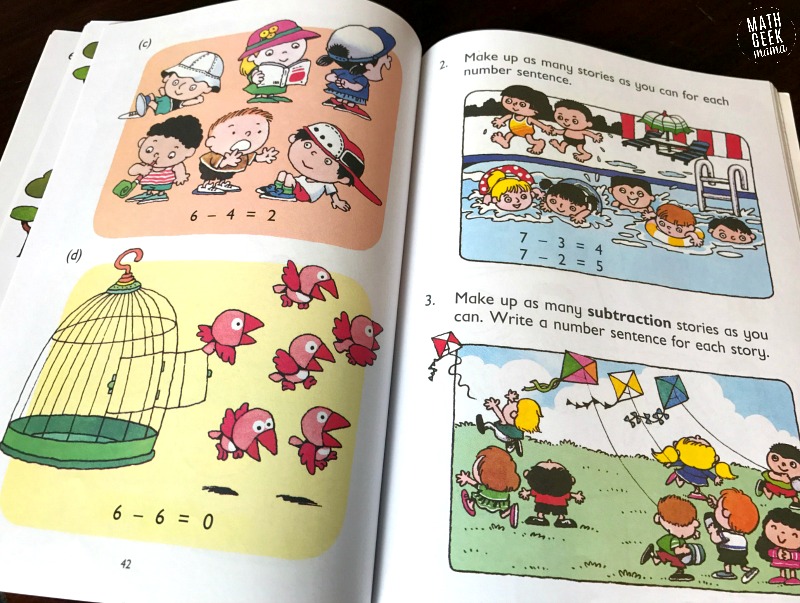
This is one of the things that I love about using a Singapore Math approach: the focus is on truly understanding a concept in a variety of ways and allowing kids the space and freedom to explore and discover their own ideas and strategies.
I also love that there is a strong emphasis on mental math strategies, with lots of visuals to help kids develop these skills.
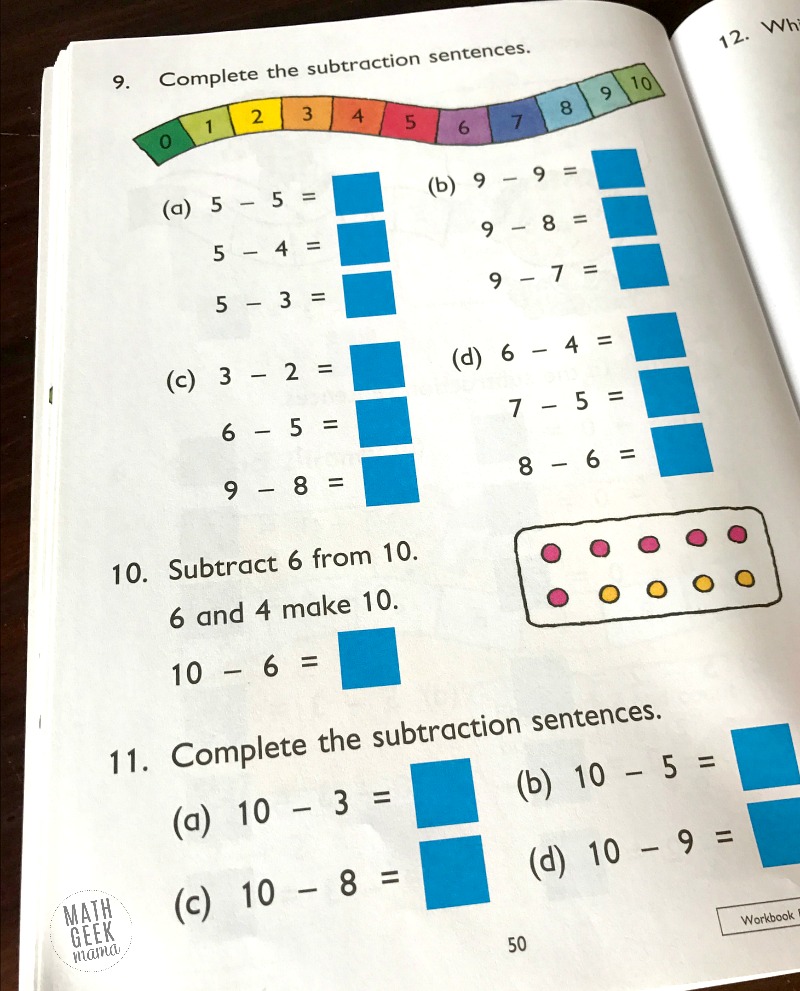
The use of visuals and mental math has really strengthened my kids’ number sense and helped to build a solid foundation.
Finally, I appreciate the spiral nature of the curriculum. By this, I do not mean “spiral” in the way that other curricula are spiral.
For example, some options, such as ShillerMath and Saxon Math, have one or two lessons on a concept and then the next lesson is completely unrelated. But throughout the year, all concepts are seen again as you “spiral” through the lessons.
Singapore Math, on the other hand, spends plenty of time on a concept, giving kids opportunities to play with manipulatives and deepen their understanding before moving on.
But kids learn the concept again later (with slightly more challenging problems or larger numbers).
So for example, when learning basic strategies for addition and subtraction, the focus is first on numbers within 20. But then later, you come back to it and rethink about these strategies within 40. Then again with numbers up to 100, and so on.
I think this is a fantastic way to approach it, because it allows kids to feel confident before moving on, but not spend so much time on it that they’re bored.
And I don’t ever stress about moving to the next unit if my kids still seem a little shaky, because I know we’ll come back to it again.
Benefits of Singapore Math:
So as a homeschooling family, I believe there are a lot of benefits to this curriculum besides the method of instruction.
First, it is one of the most reasonably priced options. Each year, you will need 2 textbooks and 2 workbooks for your child. Purchasing new, these books are about $15 each. But I have often been able to find at least some of them at local homeschool sales.
And since there’s no need to write in the textbooks, those don’t need to be repurchased year after year.
One side note, though, if you’re new to Singapore Math or don’t feel confident in your own math abilities.
There are Home Instructor Guides available that walk you through how to teach each lesson and what workbook exercises to assign. So this would be an additional cost, if you choose to use the teaching guides.
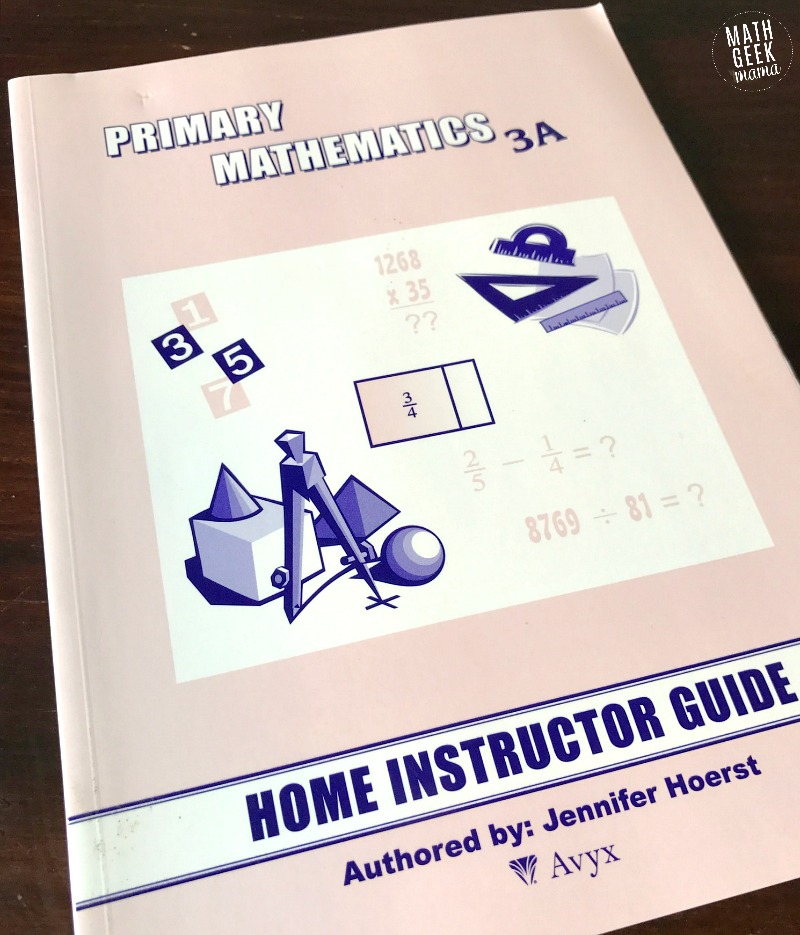
Another benefit is that it’s easy to use, as the lessons are fairly short and (for the most part) the corresponding assignments are an appropriate length.
Each topic begins with a mini lesson, which you’ll walk through with your kids using hands on manipulatives such as base ten blocks or by drawing pictures and models.

Then kids complete the independent work in their workbook.
The textbook tells you when to stop and do some practice in the workbook (see the picture above).
I usually assign one exercise per day. This is usually 2-3 pages, with lots of pictures and white space for kids to write out their thinking.
Occasionally, I assign smaller amounts if it’s a difficult concept or my kids are just having a difficult day (ultimately, we know them best, right?).
But for the most part, I’ve found the assignments to be just enough practice.
Drawbacks of Singapore Math Curriculum:
Although I do love these books and find them easy to use, there are some drawbacks if you’re considering this for your homeschool.
First, the textbooks are not “teachers” like traditional math textbooks. I see the textbooks as more of an invitation to ask questions and explore than books to read and memorize (like most math textbooks).
This could be a problem for you if you are new to the methods and strategies used in Singapore Math and aren’t really sure what you’re supposed to be teaching.
But again, if this is you, simply purchase the corresponding Home Instructor Guide to help you teach the lesson (textbook 3A guide shown below).
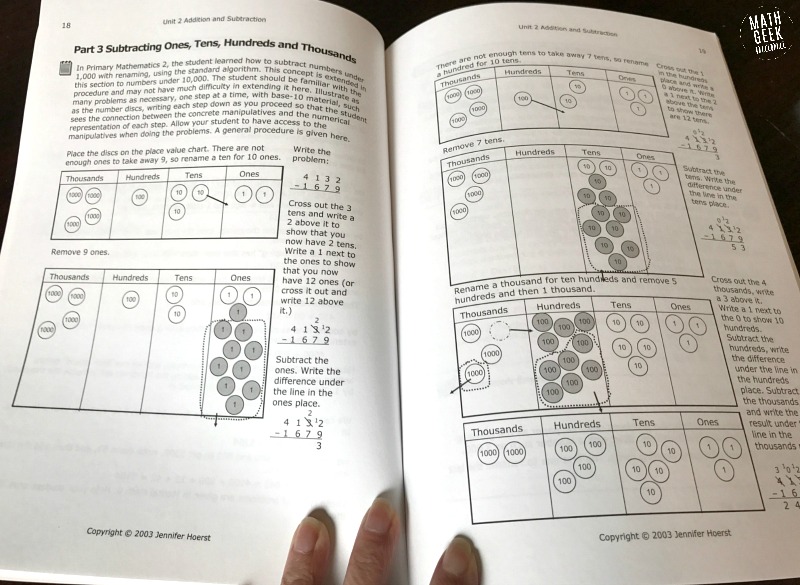
And while I generally agree with the scope and sequence, there are a few areas where I divert from the text.
First, I teach telling time using the approach in Math-U-See rather than Singapore. The Singapore Math textbooks begin as most traditional books: time to the hour and half hour first, then later time to the quarter hour, and then finally time to the nearest five minutes.
I prefer to teach to the nearest 5 minutes after working on skip counting by 5’s.
Then we just spend lots of time reviewing time throughout the year.
I also prefer to focus on number sense, place value and mental math in grades K-3, which is generally what Singapore Math does.
But in the 3rd grade books, the traditional algorithm is taught for multi-digit multiplication as well as long division.
I feel like this is early, and not yet necessary, so we’ve stuck to other strategies (using place value and mental math).
This is not to say that I won’t teach the traditional algorithms. I just think there’s plenty of time for that in 4th and 5th grade.
Finally, while I think this is generally a good paced option, some find it to be more rigorous than other curricula and too challenging for their kids.
To that, I would say you simply need to slow down and move at a pace that fits your child’s needs.
We have yet to complete a textbook set within a single school year. There’s nothing wrong with that!
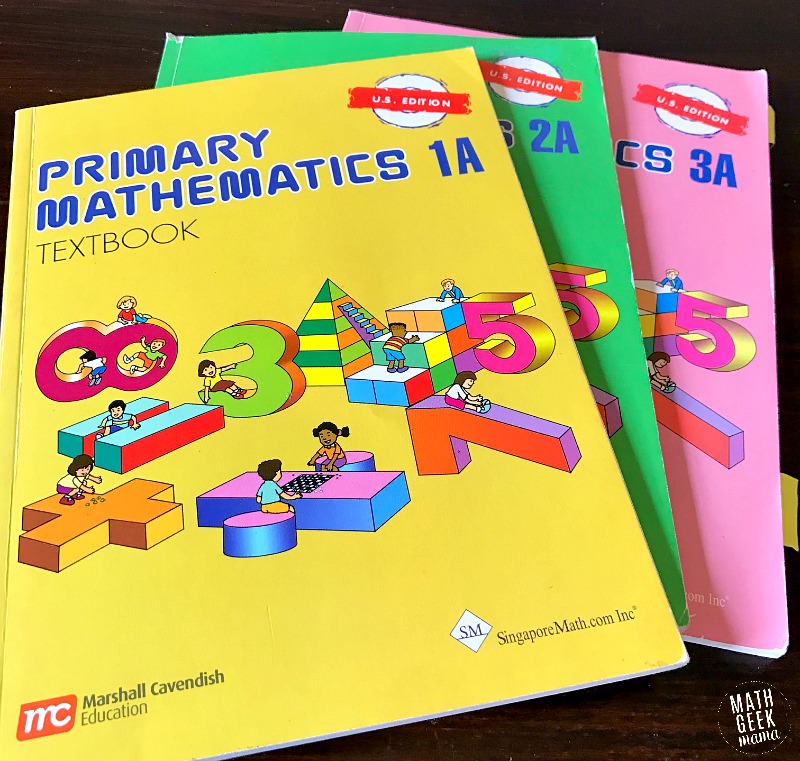
As I mentioned before, due to the spiral review and overlap of concepts from year to year, it’s ok if you don’t get through it all in one year. Especially if you’ve switched from something else to Singapore Math.
If you’re switching, I would also suggest starting one book behind where you think your kids should be. For example, if you’re starting in 3rd grade, begin with book 2B (the second book of 2nd grade).
This will give your child a chance to be familiar with the teachings and style of the book and get caught up if there are any gaps from the previous curriculum.
Getting Started with Singapore Math:
Learn more about how to get started with Singapore Math here.
Here you can also find placement tests, which is especially helpful if you’re transitioning older kids to Singapore.
You can also learn about assessments and supplemental materials that are available here.
There are extra practice workbooks (which I don’t recommend) as well as challenging word problem sets (which I do recommend).
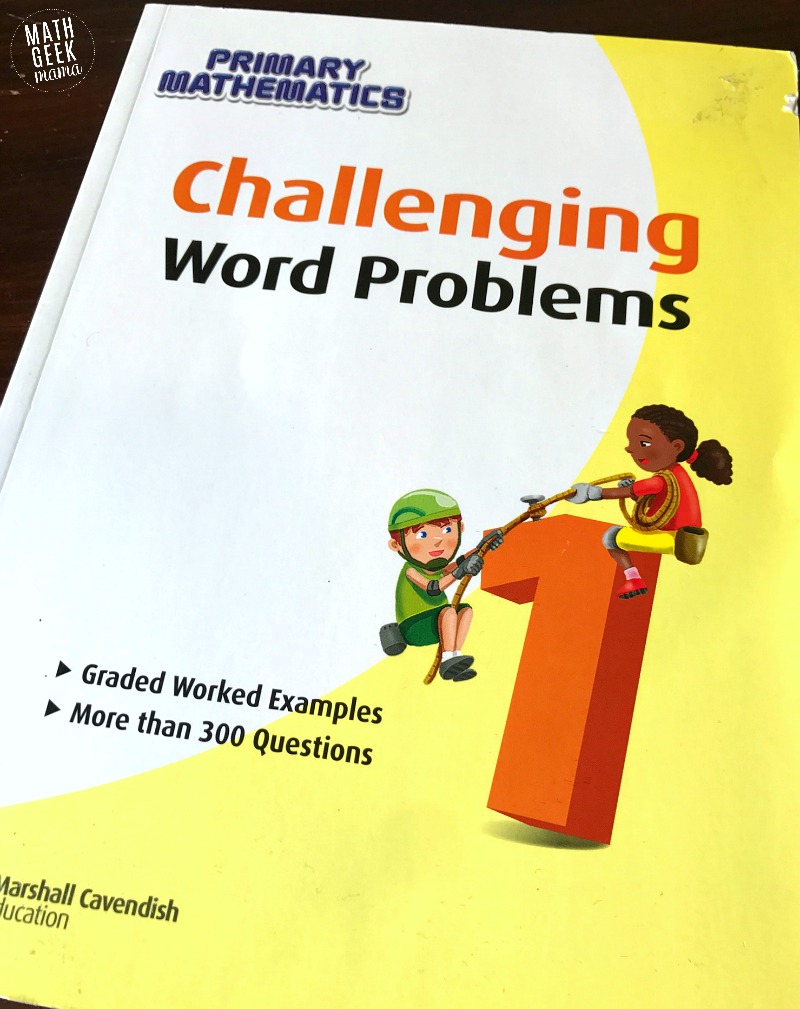
If your child needs extra practice with a particular skill, I would encourage you to find a fun and simple game to review and practice rather than more worksheets. If your child is struggling, more long and tedious worksheets are likely going to discourage them further.
You can also just tackle it again at a later time, when your child might be more ready.
Still unsure or have a question? Do you use and love Singapore Math? Or do you dislike it? Share your thoughts in the comments!



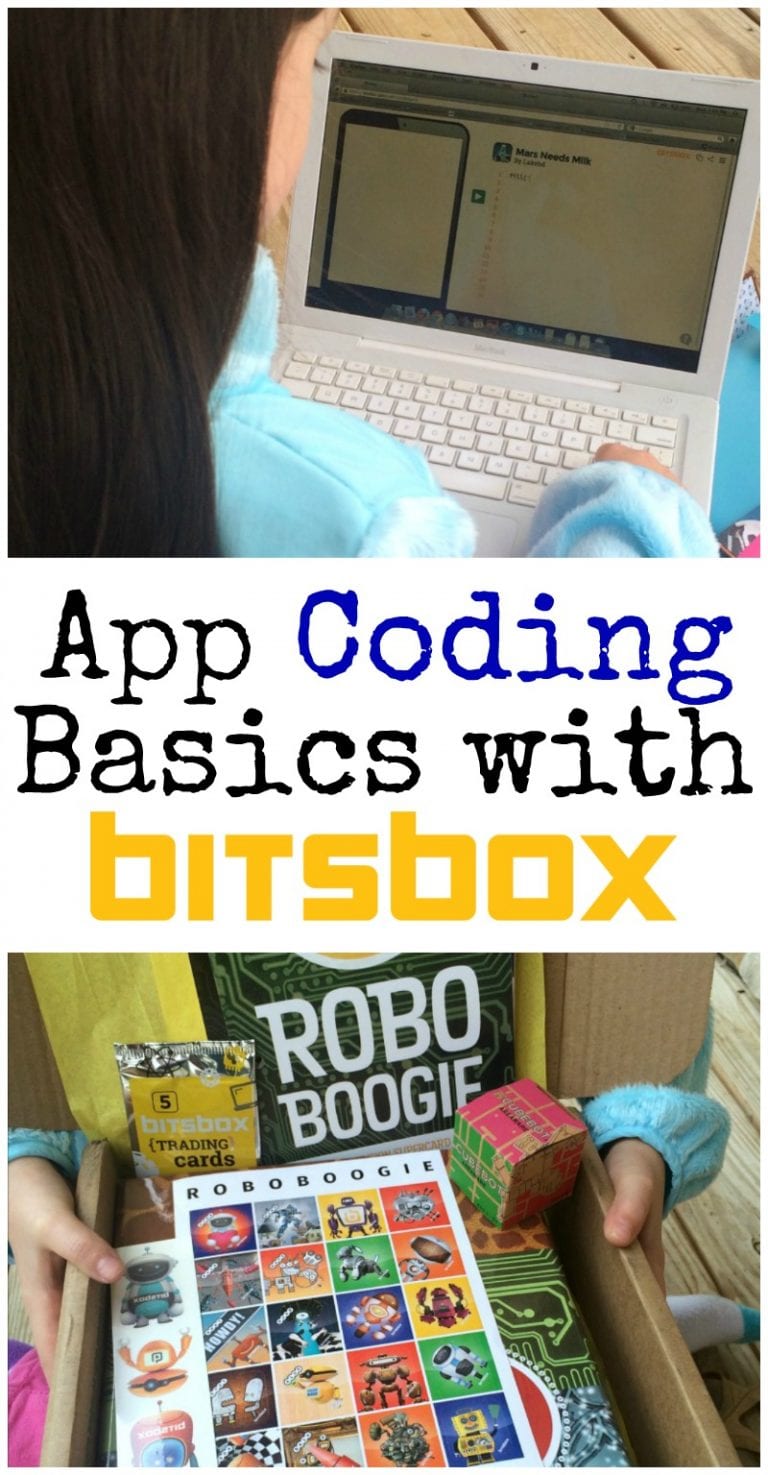
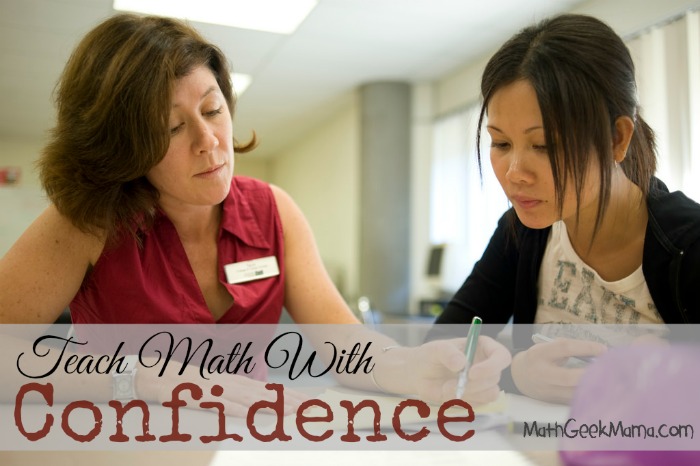

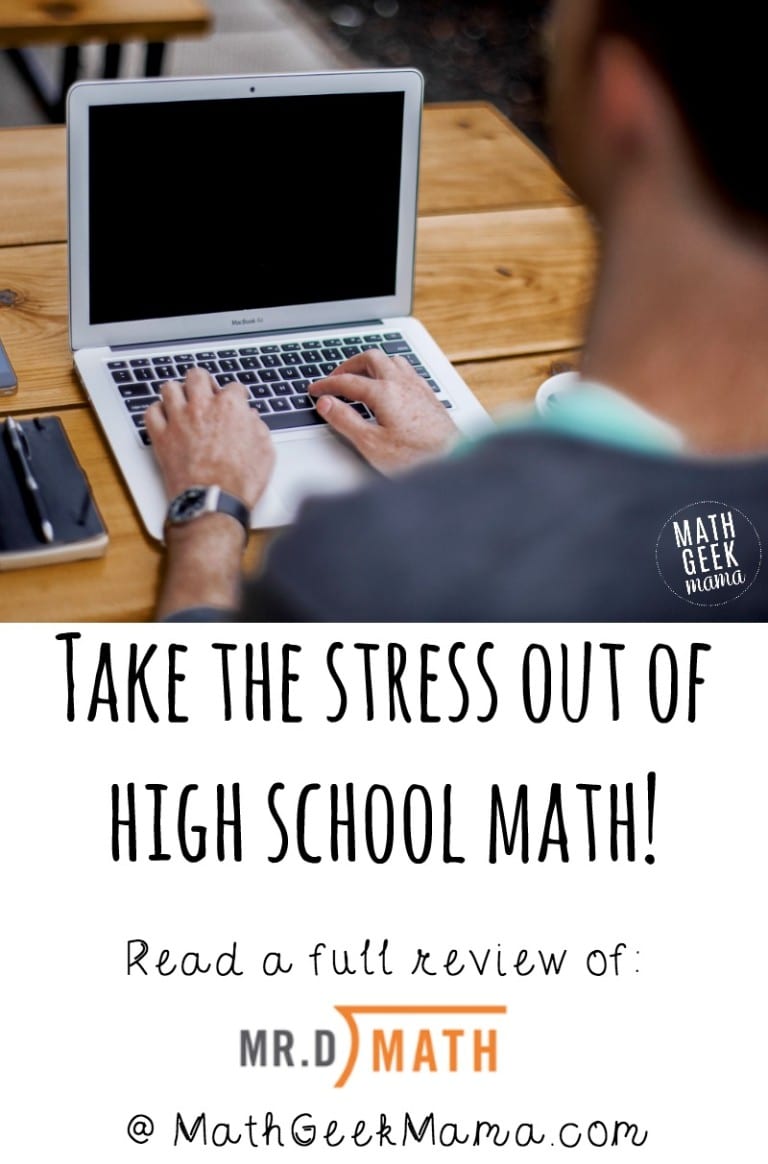
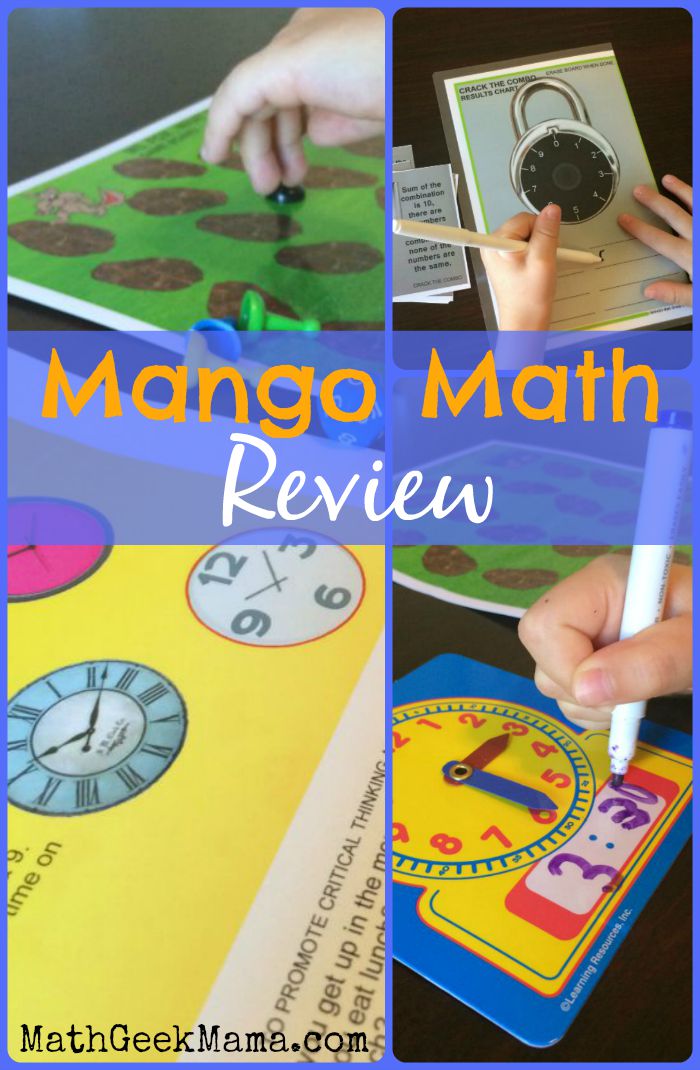




Question: What math will you be using when your kids complete the Singapore Math curriculum?
I decided to use Singapore Math and it is working well! I followed the advice here and started a book behind and was glad that I did. It made the transition from public school to homeschool math pretty painless.
I recommend the teacher guide FOR SURE unless you’ve taught math before or have a math degree of some kind. It’s been really helpful for giving me the confidence that I need to be sure I’m not missing anything and we’ve really enjoyed playing some of the games and doing activities outlined in those guides.
Hi Beth!
Thanks for sharing your experience! And that’s a great question! Honestly, I haven’t decided on that yet. I know of a few options, but I also know there is a curriculum currently being developed that will hopefully be an option when we cross that bridge. 🙂 One option that might interest parents who don’t feel confident teaching upper level math is Mr. D Math. You can learn more about that here: https://mathgeekmama.com/online-high-school-math-curriculum-review/ As I come across other good options I’ll review them as well!
They launched the Dimensions maths series and I wonder if you have any experience using this? Thanks